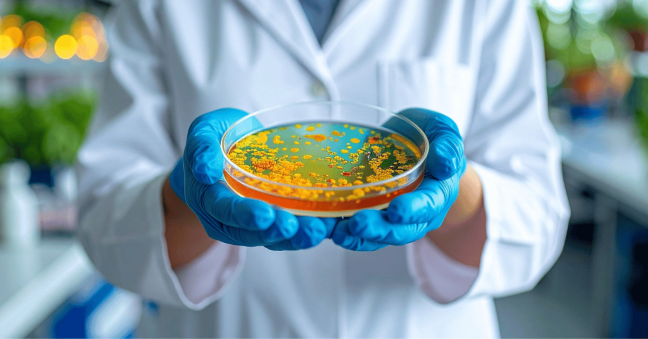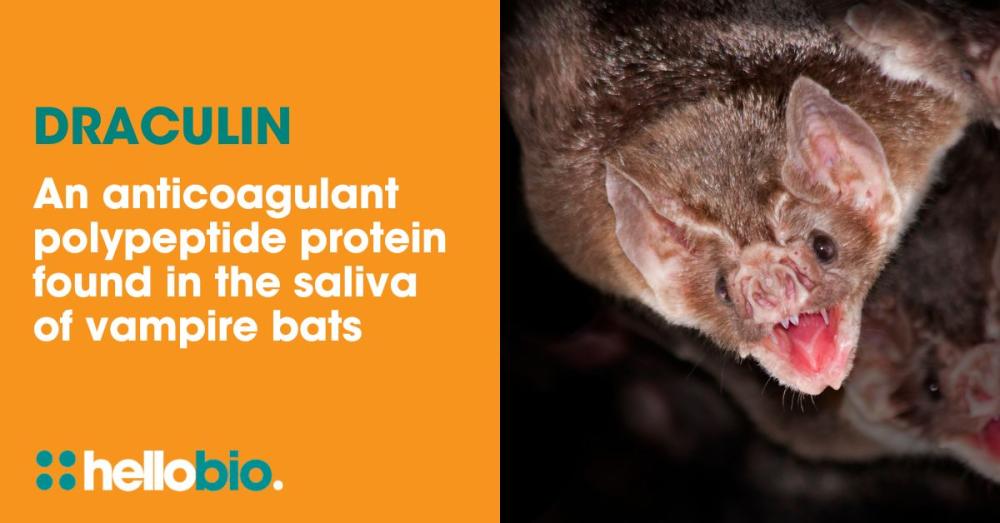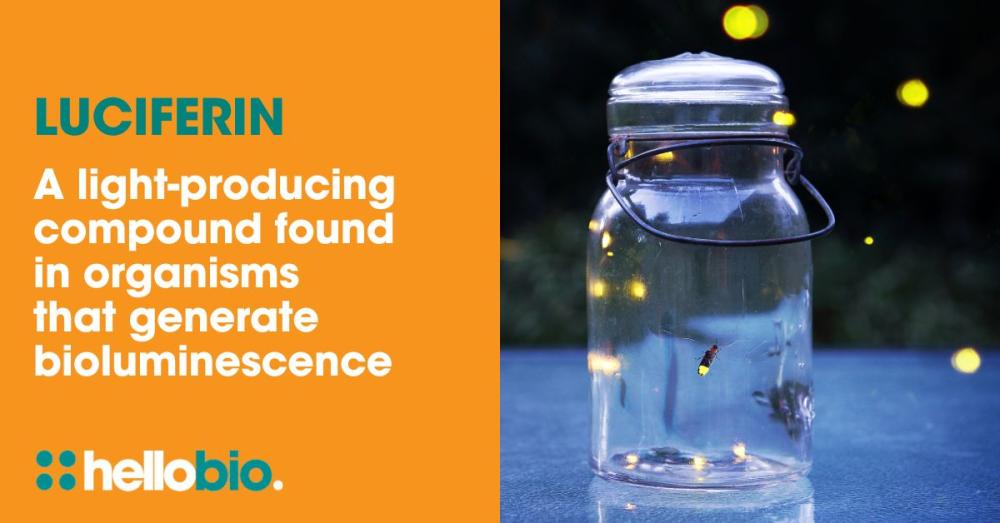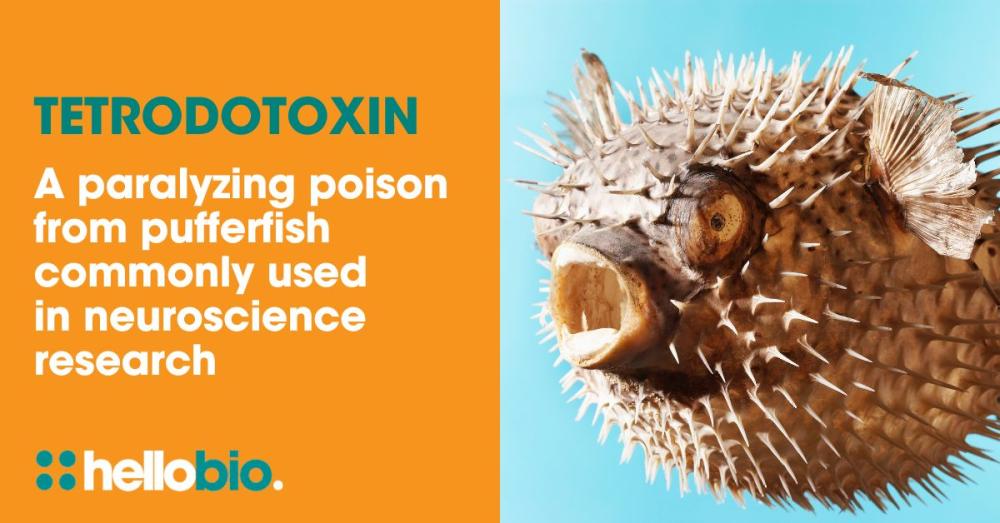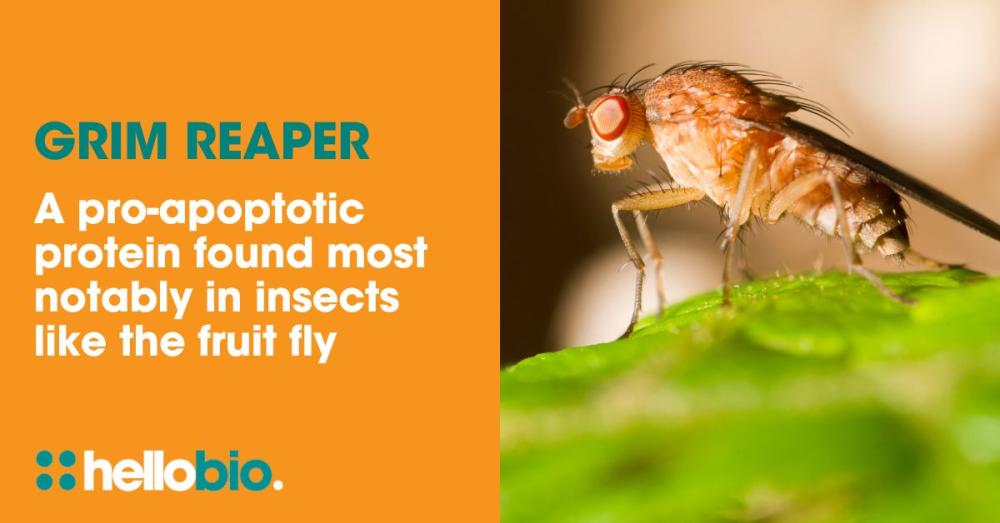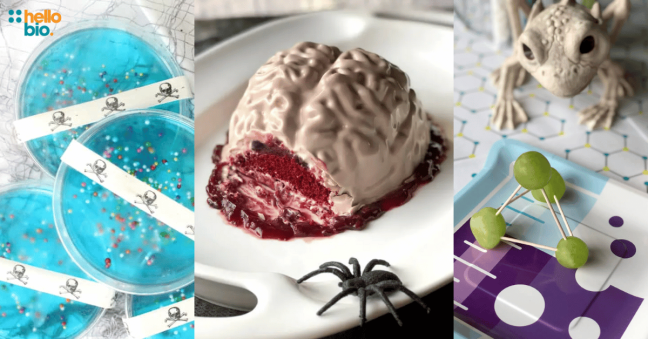Spooky Science: Uncovering the Creepiest Compounds, Proteins & Processes!
As Halloween creeps closer and labs everywhere fill with the sound of bubbling flasks and whirring centrifuges, it’s the perfect time to shine a light on the spookier side of science. When you’re busy at the bench with a terrifying deadline to meet, it’s easy to miss some of the creepy compounds, monster proteins, and deathly cell processes that are right under your microscope!
From vampire bats to zombie cells, necroptosis to bioluminescence, this bizarre collection of science terms and phrases will add a little extra chill to your lab refrigerator! We’ve picked out our favourite Halloween-themed molecules, petrifying proteins and terrible terms that are hiding in the shadows of science!
Happy Halloween from all of us at Hello Bio!
Proteins that keep the blood flowing
We all know Count Dracula as the famous fictional creation from Transylvania, but in the world of science he lends his name to a real anticoagulant polypeptide protein found in the saliva of vampire bats! These bats feed on the blood of unsuspecting animals, and Draculin keeps the blood flowing smoothly by preventing clotting. It’s a fang-tastic example of evolution in action, and scientists are even studying its component compounds for potential use in preventing strokes and heart attacks. A synthetic version of draculin is in development for use as a more effective and targeted blood thinner.
A devilish source of bioluminescence
For most of us, the name Lucifer conjures up devilish images from theology. However, Roman folklore preferred the term ‘light-bringer’, and this is the reason why the molecules luciferin and luciferase are behind one of the world’s most beautiful natural phenomena: bioluminescence. These molecules make fireflies glow, deep-sea creatures shimmer, and lab experiments sparkle (literally) when used as luminescent reporters. Despite their infernal names, these glowing compounds are actually a force for good in biology.
★ Buy D-Luciferin sodium salt from Hello Bio: hellobio.com/d-luciferin-sodium-salt.html ★
When cells ‘do the dead dance’
In the world of cell biology, death is an everyday occurrence. Cells perform a carefully choreographed process known as apoptosis, or programmed cell death. If this process becomes dysregulated, excessive apoptosis can cause diseases like neurodegenerative disorders and organ failure, while insufficient apoptosis causes cancer, autoimmune diseases, and failed tissue repair. A slightly ‘messier’ form of cell death is necroptosis which causes cells to swell and burst, triggering inflammation.
Poisonous potions and deadly delights
No Halloween would be complete without popping a few poisons in the cauldron! These molecules may sound sinister, but they’ve helped scientists understand everything from nerve transmission to liver function:
-
Botulinum toxin – a neurotoxic protein produced by the Clostridium botulinum bacterium, and one of the deadliest substances known. Despite the danger, it is commonly used in tiny doses as a therapeutic muscle weakener, and as Botox, a cosmetic treatment to reduce facial wrinkles by relaxing the muscles.
-
Amanitin – the deadly compound from the Amanita phalloides, or ‘Death Cap’ mushroom. When ingested the toxin irreversibly inhibits RNA polymerase II (RNAP II) causing cell death and severe liver poisoning. It’s been known as a historical cause of many fatal poisonings over the years, however scientists are now investigating its potential for use in cancer treatment.
-
Tetrodotoxin – this paralyzing poison from pufferfish was once thought to be used in zombie folklore, but is now known as an essential tool for neuroscience research. Despite its poisonous potential, this sodium channel blocker has shown efficacy for the treatment of cancer-related pain in clinical trials. It’s considered an essential tool for cellular neuroscience and is most commonly used to study how pain works at a cellular level.
★ Buy Tetrodotoxin from Hello Bio: hellobio.com/tetrodotoxin.html ★
The senescent ‘zombie’ cells that refuse to die
Damaged or stressed cells in the body that have stopped dividing by don’t die, are known as senescent or zombie cells. They can release harmful inflammatory signals that promote aging and disease and can contribute to conditions such as Alzheimer’s and arthritis. Zombie cells are essentially ‘stuck’ between life and death, with no ability to function but also with a resistance to programmed cell death. Scientists are currently developing senolytics, a class of experimental drugs that aim to eliminate senescent cells by targeting them before triggering apoptosis: https://pmc.ncbi.nlm.nih.gov/articles/PMC7405395/
Ghostly fish and frightful fruit flies
Nature’s nicknames can shine a spooky spotlight on certain creatures, although in the case of one particular zebrafish, that light will shine right through! A Casper is a transparent zebrafish line named after everybody’s favourite cartoon ghost. Its lack of pigmentation makes it the perfect research organism for imaging within genetic and developmental studies, as its internal organs are on view for all to see. And our final creepy creature is the fruit fly, whose Grim Reaper proteins are pro-apoptotic, meaning they are cell-death-inducing and are crucial for regulating programmed cell death during development.
Join 1000s of Scientists
Be the first to hear about new product launches, free trials, special offers, and technical tips — straight to your inbox.
Subscribe to the NewsletterHigh Quality – Low Prices
By manufacturing in-house and keeping things simple, we offer savings of up to 50% compared to traditional suppliers — without compromising on quality.





